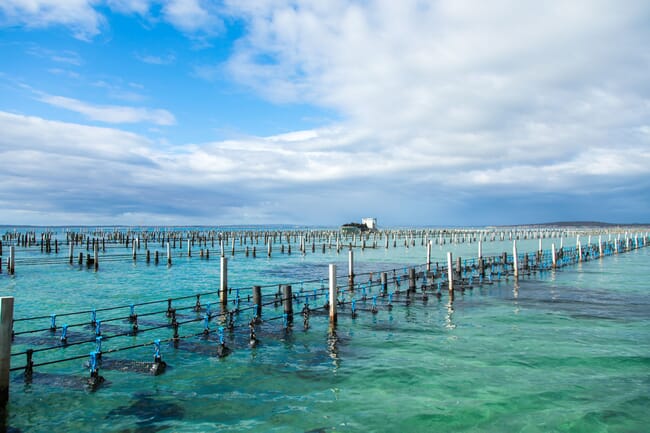The possible extant of these impacts has been assessed by the authors of a new study, who have modelled how CC-OA will impact global bivalve mariculture – on a country-by-country basis – by the end of the century.

© PIRSA
The researchers, from the Scottish Association of Marine Science (SAMS) explain: “Vulnerability, assessed at the national level, was dependent on CC‐OA‐related exposure, taxon‐specific sensitivity and adaptive capacity in the sector. Exposure risk increased over time from 2020 to 2100, with ten nations predicted to experience very high exposure to CC‐OA in at least one decade during the period 2020–2100.”
The researchers’ projections were derived from the IPCC's Representative Concentration Pathways 8.5 “business as usual” model, which assumes the highest greenhouse gas emissions and, consequently, the greatest degree of CC‐OA. These were combined with national mollusc production statistics and socioeconomic data in order to asses the relative impacts on various countries.
They note that, in developing countries, sensitivity to CC-OA primarily arose from the cultivation of species that have a narrow habitat tolerance, while in some European nations (France, Ireland, Italy, Portugal, and Spain) high sensitivity was attributable to the relatively high economic value of their shellfish production sector.
The researchers argue that predicted adaptive capacity was low in developing countries primarily due to governance issues, while in some developed countries (Denmark, Germany, Iceland, Netherlands, Sweden, and the United Kingdom) it was linked to limited species diversity in the sector. Developing and least developed nations were predicted to have the highest overall vulnerability.
Looking globally, the researchers predict that 2060 will be “a tipping point” in terms of the impact of CC‐OA on shellfish production. However, they add that rapid declines in mollusc production are predicted to occur within the next decade for some nations, notably North Korea – primarily driven by increases in sea surface temperature and declining primary productivity. In Chile and Peru, on the other hand, the model predicts that changes in sea surface temperature and aragonite saturation depth over time are predicted to cause the greatest change from 2080
On a more positive note, they hope that their research will enable early‐stage adaption in shellfish production to occur and argue that building adaptive capacity in those nations likely to be hit hardest can be done “by improving governance and/or increasing the species diversity within any existing industry”.
Further information
The full paper, published in Ecology and Evolution under the title, "A global assessment of the vulnerability of shellfish aquaculture to climate change and ocean acidification", can be accessed here.


